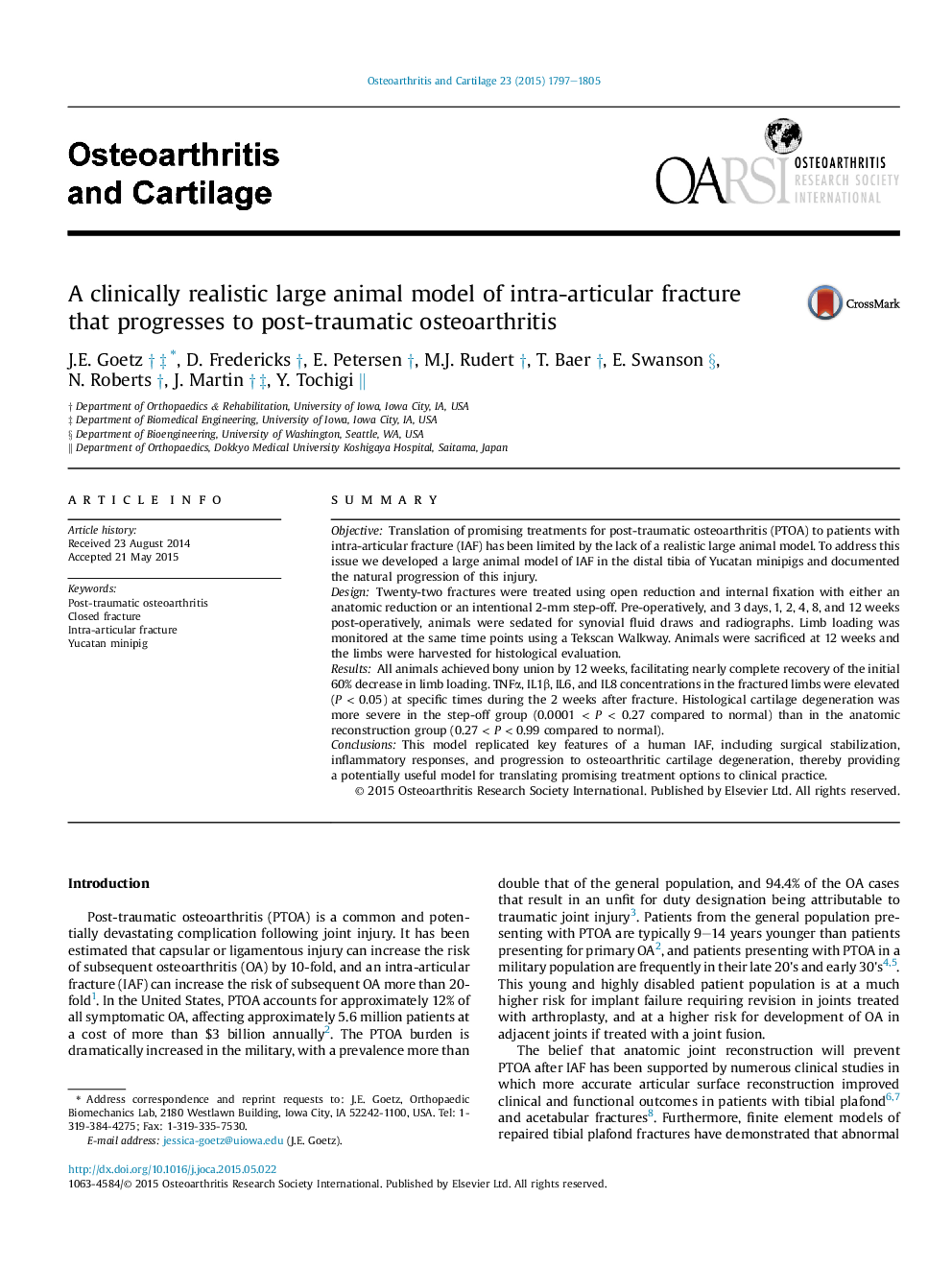| Article ID | Journal | Published Year | Pages | File Type |
|---|---|---|---|---|
| 3379175 | Osteoarthritis and Cartilage | 2015 | 9 Pages |
SummaryObjectiveTranslation of promising treatments for post-traumatic osteoarthritis (PTOA) to patients with intra-articular fracture (IAF) has been limited by the lack of a realistic large animal model. To address this issue we developed a large animal model of IAF in the distal tibia of Yucatan minipigs and documented the natural progression of this injury.DesignTwenty-two fractures were treated using open reduction and internal fixation with either an anatomic reduction or an intentional 2-mm step-off. Pre-operatively, and 3 days, 1, 2, 4, 8, and 12 weeks post-operatively, animals were sedated for synovial fluid draws and radiographs. Limb loading was monitored at the same time points using a Tekscan Walkway. Animals were sacrificed at 12 weeks and the limbs were harvested for histological evaluation.ResultsAll animals achieved bony union by 12 weeks, facilitating nearly complete recovery of the initial 60% decrease in limb loading. TNFα, IL1β, IL6, and IL8 concentrations in the fractured limbs were elevated (P < 0.05) at specific times during the 2 weeks after fracture. Histological cartilage degeneration was more severe in the step-off group (0.0001 < P < 0.27 compared to normal) than in the anatomic reconstruction group (0.27 < P < 0.99 compared to normal).ConclusionsThis model replicated key features of a human IAF, including surgical stabilization, inflammatory responses, and progression to osteoarthritic cartilage degeneration, thereby providing a potentially useful model for translating promising treatment options to clinical practice.
